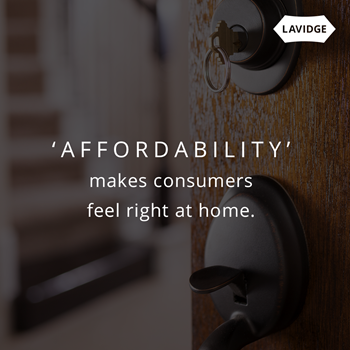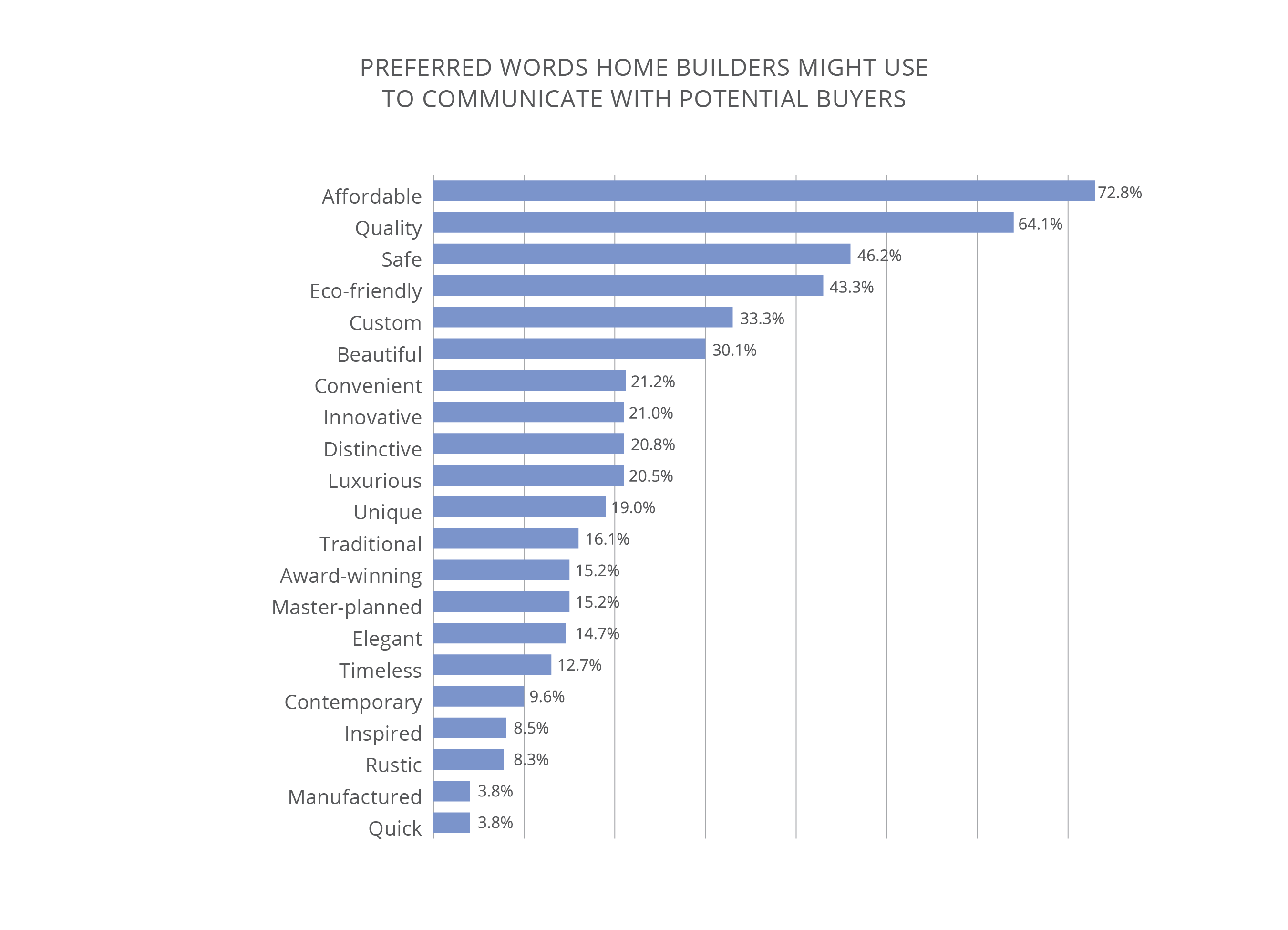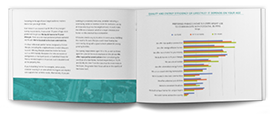Sign up for our LAVY email
and get our bi-monthly newsletter.
This article is a brief abstract of our exclusive study that takes the guesswork
out of marketing residential developments.
Download the complete 2018 Residential Development Marketing Report
Affordable is a relative term. It’s also the word 72.8% of potential buyers most want to hear when considering the purchase of a new home. At the conclusion of 2017, the median price of an existing home at $248,000 was significantly less than the median cost of a new home at $317,155. For the new build to be seen as affordable, it has to hold its own against existing inventory.
Affordability is also tied to location, location, location—and local income levels. What’s affordable in Northern California, for example, would be out of reach for median-income homebuyers in Greene, Tennessee.
In Greene, housing represented 14.5% of a monthly income of $3,055. Yet promoting affordability works equally well when marketing location-appropriate price points in either location. With wages rising at a higher rate in Greene than home prices, coupled with low demand, U.S. Housing and Urban Development (HUD) data show it had the most affordable housing in the country.
 Affordability matters in more affluent areas, as well.
Affordability matters in more affluent areas, as well.
For example, a business story published in late 2017 in the Orange County Register quotes a member of New Homes Co. leadership on the importance of attainability—a word closely related to affordability—even though they aren’t perfect synonyms. In California, the 2016 ACS ranks the median home value at $409,300, along with a higher median income of $63,783.
In this climate, a housing development offering new builds at $350,000 is considered extremely affordable—and therefore attainable. Such was the case when New Homes Co. announced 10 townhomes in Orange County’s Rancho Mission Viejo. Each one-bedroom unit featured 707 square feet and a one-car garage. At the time of the news story, the homes were set for completion in fall 2017.
A fast turnaround on these types of low-profit-margin projects is what makes them feasible for home builders interested in providing true affordability for potential buyers, the business story states.

As overwhelmingly high as respondents ranked affordable, a few more words also garnered significant acclaim. In most cases, preferences don’t exist in isolation. Affordability is just the beginning.
One fan of affordability connected it to a desire for quality saying, “I love a good deal. I love getting quality along with affordability. I would buy a nice house that was affordable.”
In fact, quality, at 64.1%, was the second-most preferred descriptor of new homes among research study respondents. This should be good news for at least one new home builder. Centex, a member of the Pulte Group family, pinned a report to Pinterest branding itself as a provider of quality craftsmanship and construction offering the Centex Build Quality Experience. Many other residential builders also reference quality in their materials, to varying degrees and at various levels of affordability.
Safe was the most important marketing word for 46.2% of survey respondents when considering the purchase of a new home. “Many people while buying a home want to know their families are safe, so reassuring their safety [works] wonders,” one survey respondent said. Exactly what that means, however, varied widely. Clarifying comments ran the gamut from who should be safe to how or where that safety would be manifest within their own four walls or beyond their property line.
In addition to being prepared for weather, Mother Nature got the nod from 43.3% of survey respondents who said being eco-friendly was their top priority when purchasing a new home.
Residential builders can demonstrate to potential buyers their attention to environmental concerns by following national guidelines for certification such as:
LEED – Leadership in Energy and Environmental Design offers varying levels of assurance that eco-friendly standards have been used in building projects.
ENERGY STAR® – a joint government program between the Department of Energy and the Environmental Protection Agency to certify appliances and building materials used will contribute to a 20% to 30% reduction in energy consumption over traditional homes.
National Association of Home Builders (NAHB) – A third party inspects properties for adherence to the association’s National Green Building Standard (NGBS). The NGBS can be applied to single-family homes, townhomes and duplexes.
What was missing in the comments but showed up prominently in secondary research is the forward-looking forms of ecology. Trends identified for 2018 and beyond include building homes that are solar ready with a solar conduit and meter or adding a car charger in the garage for some future electric car. Either adds a nominal cost when done upfront, saving both time and money as solar energy and electric cars become the new norm in American homes.
 It doesn’t end there. Home automation can contribute to curbed energy costs by running heating and cooling as efficiently as possible. The systems learn to recognize occupant patterns and can adjust temperature control accordingly. Some builders are including them in their packages—with upgrades complete with multi-point access WiFi technology throughout the home, video doorbells outside and integrated alarm systems (harkening back to the desire for safety).
It doesn’t end there. Home automation can contribute to curbed energy costs by running heating and cooling as efficiently as possible. The systems learn to recognize occupant patterns and can adjust temperature control accordingly. Some builders are including them in their packages—with upgrades complete with multi-point access WiFi technology throughout the home, video doorbells outside and integrated alarm systems (harkening back to the desire for safety).
Letting buyers know you use air-tight sealed construction and eco-friendly paint can add the final touches—making your home more valuable than an ordinary “not-so-smart” product produced by the competition.
So, words really do matter. From affordable to quality, and from safe to eco-friendly, home buyers not only know what they want, but they are clear on the vocabulary they prefer. Keep this in mind—and develop marketing materials fine-tuned for what potential buyers want to hear.

This article is a brief abstract of our exclusive study about home buyers and their preferences for advertising and marketing tactics used by new home builders.
Sign up for our LAVY email
and get our bi-monthly newsletter.